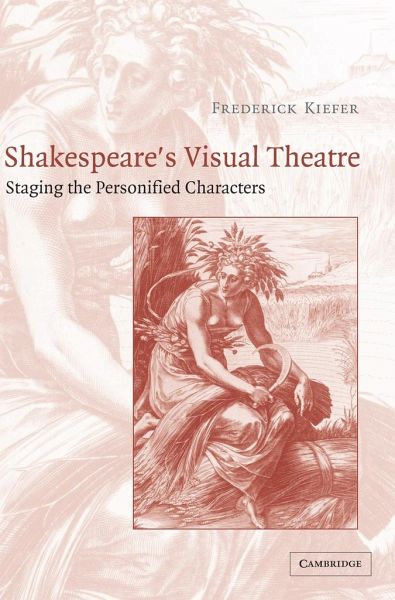
Shakespeare's Visual Theatre
Staging the Personified Characters
Versandkostenfrei!
Versandfertig in 1-2 Wochen
126,99 €
inkl. MwSt.

PAYBACK Punkte
63 °P sammeln!
In this study of Shakespeare's visual culture Frederick Kiefer looks at the personified characters created by Shakespeare in his plays, his walking, talking abstractions. These include Rumour in 2 Henry IV, Time in The Winter's Tale, Spring and Winter in Love's Labour's Lost, Revenge in Titus Andronicus, and the deities in the late plays. All these personae take physical form on the stage: the actors performing the roles wear distinctive attire and carry appropriate props. The book seeks to reconstruct the appearance of Shakespeare's personified characters; to explain the symbolism of their co...
In this study of Shakespeare's visual culture Frederick Kiefer looks at the personified characters created by Shakespeare in his plays, his walking, talking abstractions. These include Rumour in 2 Henry IV, Time in The Winter's Tale, Spring and Winter in Love's Labour's Lost, Revenge in Titus Andronicus, and the deities in the late plays. All these personae take physical form on the stage: the actors performing the roles wear distinctive attire and carry appropriate props. The book seeks to reconstruct the appearance of Shakespeare's personified characters; to explain the symbolism of their costumes and props; and to assess the significance of these symbolic characters for the plays in which they appear. To accomplish this reconstruction, Kiefer brings together a wealth of visual and literary evidence including engravings, woodcuts, paintings, drawings, tapestries, emblems, civic pageants, masques, poetry and plays. The book contains over forty illustrations of personified characters in Shakespeare's time.














